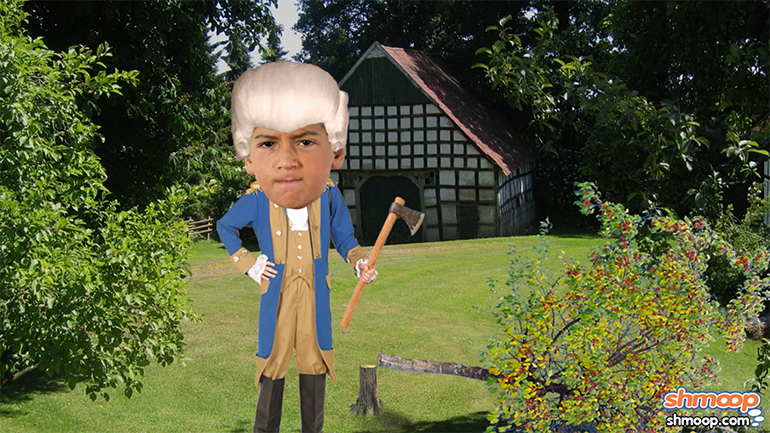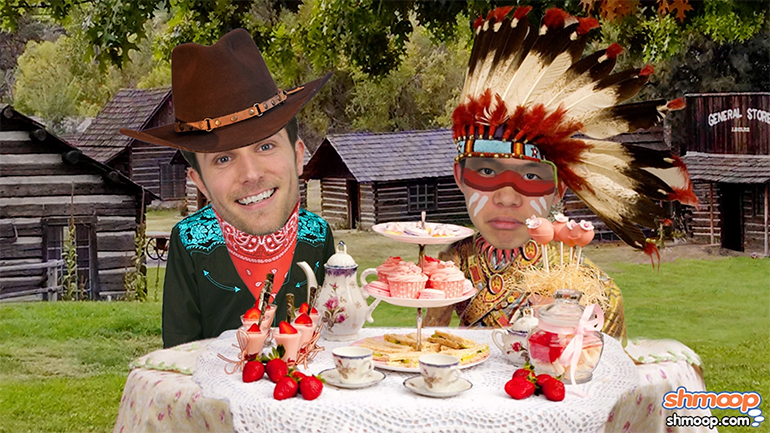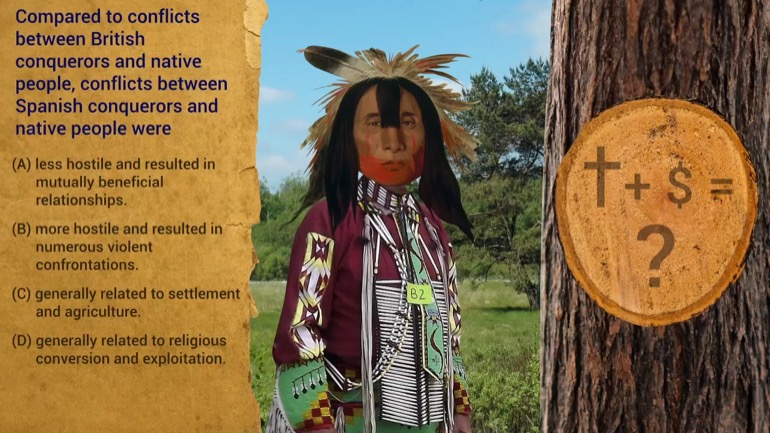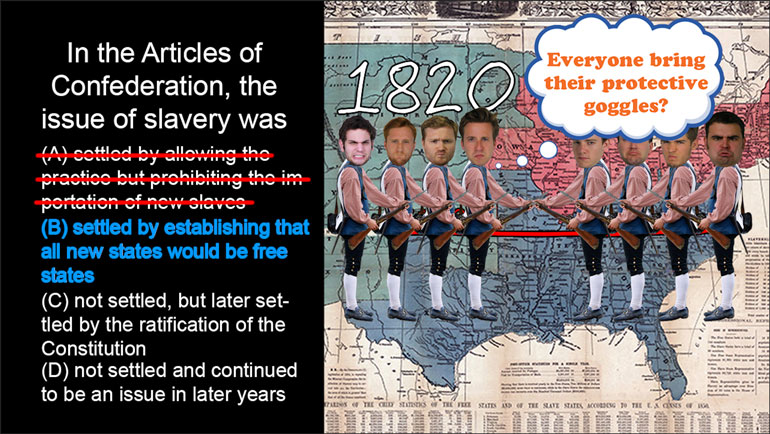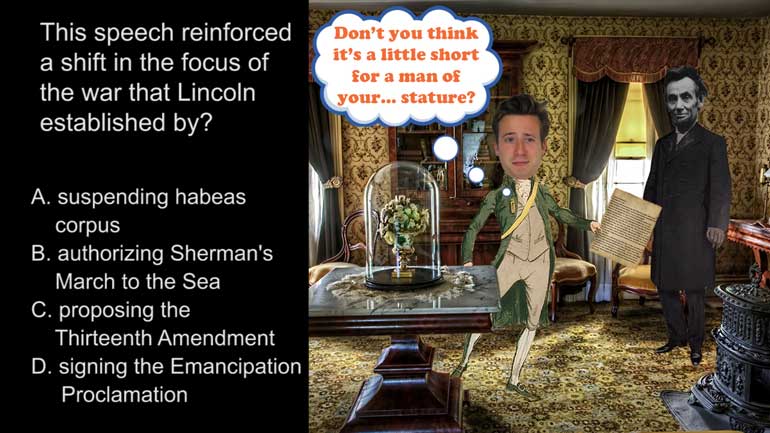ShmoopTube
Where Monty Python meets your 10th grade teacher.
Search Thousands of Shmoop Videos
A New Constitution Videos 8 videos
AP U.S. History 4.1 Period 3: 1754-1800. The argument in the excerpt is most clearly an example of which of the following late 18th-century trends?
AP U.S. History 4.3 Period 3: 1754-1800. Which of the following factors contributed most directly to the trend described in the excerpt?
AP U.S. History Exam 2.12. How did the provisions laid out in the excerpt lead to problems for the new government?
AP U.S. History 1.3 Period 3: 1754-1800 247 Views
Share It!
Description:
AP U.S. History 1.3 Period 3: 1754-1800. In the Articles of Confederation, the issue of slavery was...what?
Transcript
- 00:00
[ musical flourish ]
- 00:03
And here's your Shmoop du jour, brought to you by punting,
- 00:06
the best way to get rid of a problem. Yeah.
- 00:09
Give this excerpt a read.
- 00:11
[ mumbles ]
Full Transcript
- 00:14
[ mumbling continues ]
- 00:19
[ mumbles ]
- 00:21
All right, and now the question:
- 00:22
In the Articles of Confederation,
- 00:24
the issue of slavery was... what?
- 00:27
And here are your potential answers. [ meow ]
- 00:29
Settled... settled... not settled... not settled... Hmm.
- 00:32
All right, our biggest clue here is the date
- 00:35
that the Articles of Confederation was written.
- 00:37
So remember that year - 1781 -
- 00:40
as we check out these answers.
- 00:42
Did the Articles of Confederation A -
- 00:44
settle the issue of slavery by allowing the practice
- 00:47
but prohibiting the importation of new slaves?
- 00:50
Well, let's see.
- 00:51
International slave trading wasn't banned until 1808.
- 00:54
That's almost 30 years later. So that eliminates A.
- 00:57
And what about B?
- 00:58
They settled slavery by establishing that all new states
- 01:01
would be free states.
- 01:03
Well, does the Missouri Compromise
- 01:05
ring a bell? It should, because that 1820 act
- 01:07
attempted to resolve the issue of whether or not
- 01:09
new states would allow slavery.
- 01:11
And even that didn't fix things.
- 01:13
In fact, it took another 45 years
- 01:15
for the government to settle things once and for all.
- 01:18
And it was bloody when they did.
- 01:19
So it's not B, either.
- 01:21
So then maybe the issue of slavery was C -
- 01:24
not settled by the Articles but was later settled
- 01:26
by the ratification of the Constitution.
- 01:29
Well, that sure would have saved everyone a lot of trouble down the road,
- 01:32
but the Constitution also failed to
- 01:34
clarify the government's position on slavery.
- 01:36
That knocks out C, as well.
- 01:38
Which means that slavery was D -
- 01:40
not settled in the Articles
- 01:42
and continued to be an issue in later years.
- 01:45
And did it ever. Slavery was
- 01:47
the giant elephant in the room in the early days of the country.
- 01:50
Nobody wanted to talk about it because it always
- 01:52
ended in a big disagreement.
- 01:54
So rather than talk about the problem,
- 01:56
they just ignored it. So the correct answer is D.
- 01:59
And we all know that when you ignore
- 02:00
your problems, well, they just go away, right?
- 02:03
[ umm... ]
Related Videos
AP U.S. History Exam 2.45. The journey shown on the map was an example of...what?
AP U.S. History Exam 2.26. This speech reinforced a shift in the focus of the war that Lincoln established by...what?
What did the Spanish messengers bring with them to North America? Hint: you probably wouldn't be thrilled to get this for your next birthday.
AP U.S. History Diagnostic 24. How did the United States choose containment over the National Security Council Report in Latin America?
AP U.S. History Exam 2.25. In writing the Gettysburg Address, Lincoln was still working to win over Northern voters who believed that...what?
